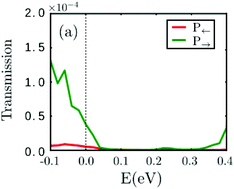Realizing giant tunneling electroresistance in two-dimensional graphene/BiP ferroelectric tunnel junction
Abstract
Ferroelectric tunnel junctions (FTJs) composed by sandwiching a thin ferroelectric layer between two leads have attracted great interest for their potential applications in nonvolatile memories due to the tunnel electroresistance (TER) effect. So far, almost all FTJs studied focus on adopting three dimensional (3D) ferroelectric materials as the tunnel barrier. Recently, many two-dimensional (2D) ferroelectric materials with in-plane or out-of-plane spontaneous polarization have been theoretically proposed or even fabricated, providing a new type of candidate as the tunnel barrier in FTJs. However, very little has been known about whether such 2D ferroelectric materials may lead to an excellent TER effect. In this work, using first-principles calculations, we demonstrate that a giant TER effect of around 623%, which is comparable to 3D FTJs, can be realized through the ferroelectric tunnel junction constructed with the 2D ferroelectric materials BiP and B/N-doped graphene. The analysis of the effective potential and electronic structure indicates that the large TER ratio arises from the unsymmetrical screening effects of the B/N-doped vertical van der Waals graphene/BiP leads. Our findings demonstrate the great potential of novel application of 2D ferroelectric BiP in FTJs.



 Please wait while we load your content...
Please wait while we load your content...